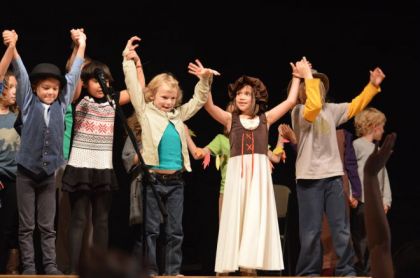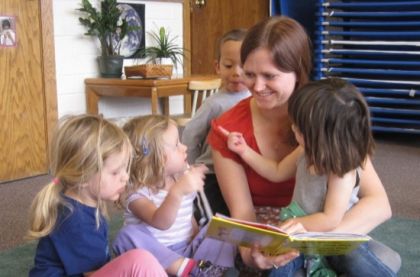One of the great attributes of success is confidence. While success breeds confidence, confidence also breeds success. However, there are no real courses on success, no seven easy steps, no magic potions, so how do we help our children build this important component into their lives?

The first level of building confidence is the ability to finish a project. In Montessori you introduce activities that are reasonable for the child to achieve. Second, you then give the child the time to achieve. Third, the project has to have value; it has to be worthwhile. (Learning to tie your shoes for a young child meets this need.) For confidence to build the project also has to have an element of real challenge – not one that can be accomplished in a moment or a day – learning to read fills this bill. Real confidence has to take you through all kinds of situations for which you are not prepared – which is pretty much a definition of life.
A Montessori classroom offers a child the ability to work at a problem (and the one that follows that etc) for a long time, while making mistakes (and not being devastated by them) and working your way to a satisfactory conclusion. Confidence just doesn’t come from finishing but by surmounting the problems that prevent you from reaching an easy victory. Confidence comes amidst the obstacles, the problems and the difficulties.
As parents, we don’t want our children to struggle so we often short circuit the confidence process by doing the heavy lifting or rescuing our children. We often don’t hear the child’s inaudible cry, “Help me do it myself.” Dr. Montessori heard it and developed a whole environment to make it possible for them to do it themselves.
Confidence also comes and is aided by people who tell you that you can, instead of telling you that you can’t. The seeds of confidence are tiny and are watered by small words, small deeds and small accomplishments. A Montessori environment opens to your child not only the realm of the possible but the realm of the impossible. When you are three or four years old so many things seem impossible – math, riding a two wheeler, jumping rope. Ironically, as you grow the list of the impossible grows along with you because now there are so many more things you never even know about that seem to go on the impossible list.
This is where real confidence begins its ascent of the mountains of impossibility. Everyday in a Montessori classroom where your child has a plan of activity, works through mistakes, takes one bite at a time of the problems, is being encouraged and works at the challenge again and again is laying the bedrock for a lifetime of confidence.
Confidence is like the ancient story of the shepherd boy David who said, “I killed the bear and the lion, this Goliath (of a problem, a challenge an impossibility) will be no different. Confidence – been there, done that – bring it on!
by: Edward Fidellow
www.crossmountainpress.com



